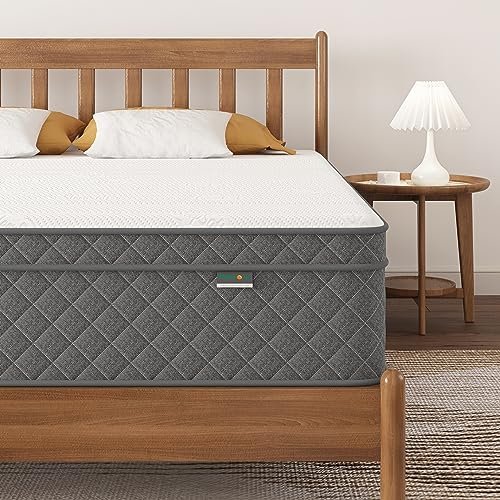
Are Latex Mattresses Eco-Friendly? A Comprehensive Guide
Recommended Product:
Choosing a mattress is a big decision, impacting your sleep and your environment. If eco-friendliness is a priority, you’re likely wondering: are latex mattresses truly eco-friendly? The answer is nuanced, and depends largely on the type of latex and manufacturing processes involved. Let’s delve deeper.
Understanding Latex: Natural vs. Synthetic
The key to understanding the eco-friendliness of a latex mattress lies in differentiating between natural and synthetic latex.
- Natural Latex: This is derived from the sap of the Hevea brasiliensis rubber tree. It’s a renewable resource, making it a more sustainable option than synthetic alternatives. However, the sustainability extends beyond just the raw material. Ethically sourced natural latex from farms practicing responsible forestry and avoiding harmful pesticides is crucial for a truly eco-friendly mattress. Look for certifications like GOTS (Global Organic Textile Standard) or OEKO-TEX Standard 100 to ensure responsible production.
- Synthetic Latex: This is a petroleum-based product, meaning its production relies on non-renewable resources and contributes to carbon emissions. While often cheaper, it’s significantly less eco-friendly than natural latex. Avoid synthetic latex if environmental impact is a major concern. Often, mattresses will blend natural and synthetic latex, so carefully check the materials breakdown.
Evaluating the Eco-Friendliness of a Latex Mattress: A Step-by-Step Guide
- Check the Latex Type: Look for mattresses explicitly stating “100% natural latex” or a very high percentage (ideally above 90%). Be wary of vague terms.
- Verify Certifications: Seek out certifications like GOTS, OEKO-TEX Standard 100, or other reputable eco-labels. These certifications ensure the latex is organically sourced and produced without harmful chemicals.
- Investigate Manufacturing Processes: Inquire about the manufacturing process. Look for companies that prioritize energy efficiency and waste reduction. Water usage and responsible waste disposal should be considerations.
- Consider the Mattress’s Lifespan: A durable, long-lasting mattress is environmentally responsible. A mattress that lasts for a decade or more reduces the need for frequent replacements.
Recommended Product:
- Examine Packaging and Shipping: Sustainable packaging and shipping methods minimize environmental impact. Opt for companies that use recycled materials and reduce transportation distances.
Tips for Choosing an Eco-Friendly Latex Mattress
- Prioritize Transparency: Companies committed to sustainability will readily share information about their sourcing, manufacturing, and shipping processes. Don’t hesitate to contact the manufacturer directly with questions.
- Read Reviews Carefully: Look beyond basic product reviews. See if other consumers have commented on the company’s commitment to environmental responsibility.
- Compare Prices Carefully: While natural latex mattresses tend to be more expensive than synthetic ones, the long-term environmental benefits and health considerations make the investment worthwhile for many consumers.
Common Mistakes to Avoid
- Assuming “Latex” Means Eco-Friendly: Not all latex is created equal. Always confirm it’s natural latex and check for certifications.
- Ignoring Manufacturing Processes: Focus solely on the material without considering the environmental impact of the manufacturing processes.
- Neglecting Packaging and Shipping: Overlooking the sustainability of packaging and shipping contributes to the overall environmental footprint.
- Failing to Verify Certifications: Simply believing marketing claims without verifying them with reputable certifications.
Conclusion
Choosing an eco-friendly latex mattress is a thoughtful decision with long-term benefits for both your health and the planet. By carefully considering the steps outlined above, you can make an informed choice that aligns with your values and ensures a restful night’s sleep on a mattress that is kinder to the environment. Remember, transparency and certification are your best friends in navigating the world of eco-friendly mattresses.
Recommended Product:
FAQ
Q. Are latex mattresses inherently eco-friendly?
A. Not all latex mattresses are created equal. While natural latex derived from rubber trees is a renewable resource and biodegradable, many mattresses use synthetic latex blends or contain non-eco-friendly components like adhesives and flame retardants. The entire manufacturing process also contributes to the environmental impact. So, while the potential for eco-friendliness exists, it depends heavily on the specific mattress and its materials.
Q. What makes a latex mattress eco-friendly?
A. An eco-friendly latex mattress will use 100% natural latex (certified organic is even better), will be manufactured with minimal chemicals and low-impact processes, and will use organic cotton or other sustainable materials for the cover and any additional components. Look for certifications like GOLS (Global Organic Latex Standard) and OEKO-TEX Standard 100.
Q. Are synthetic latex mattresses eco-friendly?
A. No, synthetic latex mattresses are generally not considered eco-friendly. They are derived from petroleum-based products, making them non-renewable and contributing to pollution. The manufacturing process also typically involves more chemicals than natural latex production.
Q. What are the environmental downsides of latex mattresses?
A. Even natural latex mattresses can have environmental drawbacks. The cultivation of rubber trees, though renewable, can still impact deforestation and biodiversity if not sustainably managed. Transportation and manufacturing processes contribute to carbon emissions. Finally, the disposal of a latex mattress at the end of its life is also a consideration.
Q. How can I find a truly eco-friendly latex mattress?
A. Thoroughly research manufacturers and look for certifications like GOLS and OEKO-TEX Standard 100. Check the materials list carefully to ensure it’s predominantly natural latex with organic cotton or other sustainable materials. Read reviews and consider supporting companies with transparent and sustainable practices.
Q. Are all organic latex mattresses truly organic?
A. Not necessarily. While the term “organic” suggests natural materials, it’s vital to look for third-party certifications (like GOLS) to verify that the latex has been produced according to strict organic standards throughout its entire process. “Organic” can sometimes be used loosely in marketing.
Q. How long do latex mattresses last, and does this impact their environmental footprint?
A. High-quality latex mattresses are durable and can last for 10-20 years or longer. This longevity reduces the need for frequent replacements, minimizing the overall environmental impact compared to mattresses with shorter lifespans.
Q. What about the packaging of eco-friendly latex mattresses?
A. The packaging should also be considered. Look for companies that utilize recycled and recyclable materials for their packaging and minimize the amount of packaging used. Eco-conscious brands will strive for minimal environmental impact in all aspects of their product.
Q. Can I recycle my latex mattress?
A. The recyclability of latex mattresses depends on your local waste management options. Some companies offer mattress recycling programs, but it’s not always widely available. Contact your local waste management service or the mattress manufacturer to inquire about recycling options.
Related Articles
Are Hybrid Mattresses Good For Heavy People
Are Hybrid Mattresses Good for Heavy People? A Comprehensive Guide Recommended Product: Duchessz Queen Mattress, 14 Inch Hybrid Mattresses Black with …



